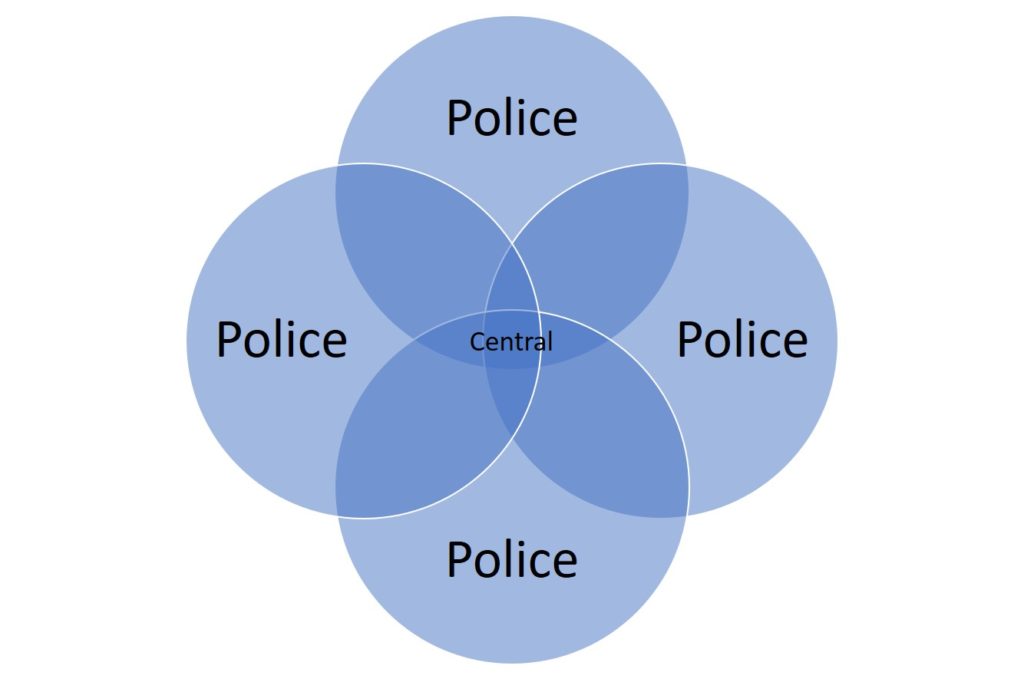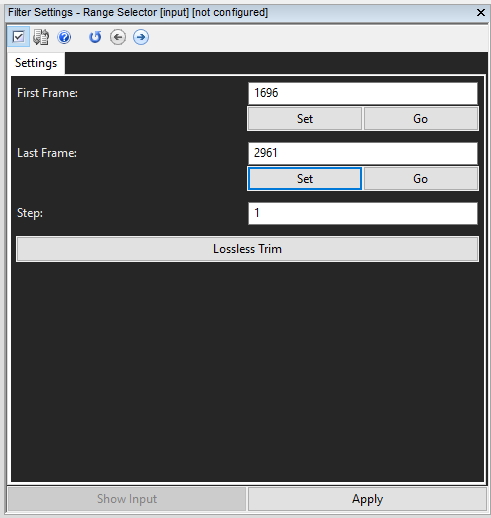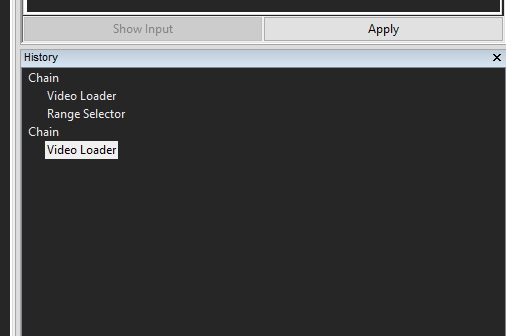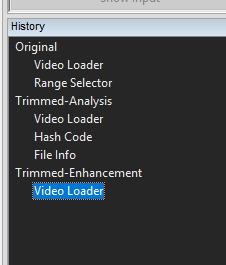I’m at Schiphol again!
For those unaware, this is the airport in Amsterdam, The Netherlands.
I’m often here as I use this airport as a layover for many international flights when I can’t get one from my local airport in the UK.
This time though I have stayed here, in the Netherlands, delivering more Amped FIVE training.
It’s an easy airport to find a quiet spot to type!
I haven’t been able to blog as much as I would like over the past few months as I have been running many different training sessions and workshops. During these, I have noticed an emerging trend but never made the connection until this week.
To lay the foundations for this subject, let’s look at how a large law enforcement agency or a country made up with smaller agencies are commonly organised. I know there are many, many configurations but you should get the picture!!
First, we have a Regional Police Force.

The Force may be split up into local Areas, Divisions or Boroughs. In the center, we have the HQ.
Many large forces have localised digital support units, utilizing officers and staff with digital forensic skills. They can then assist all local investigations. Many investigations now have a digital aspect and most have some sort of video involvement. Usually, it’s the first question to be asked – “is there any CCTV?”
In the HQ there will be further staff, but these are more commonly the subject matter experts who are dedicated to either multimedia, cell phones or computers etc. It’s these people that will conduct higher level analysis and perhaps conduct image comparisons and authentication work. They will also assist in the training and development of the local staff.
A similar picture can be painted with countries that include many smaller police forces.

There will often be a central agency or lead force with all the other forces either surrounding them or working with them when needs arise.
I have been to many different countries and police forces over the past 18 months and this relationship, or a version of it, appears everywhere.
Some even have smaller associations, working groups or partnerships to work better, together.
The importance of this partnership approach, specifically in the field of multimedia forensics, cannot be understated.
Traditional forensics commonly have a standardised start point. Even cell phones and computers only have a limited number of configurations. Therefore, many common tasks can be automated.
With video, we do not have a known start point. In all my attempts over the years to get the security industry to open their eyes, some of the big players still believe that secret, proprietary encoding and formatting is the way forward.
If you are a manufacturer and you wish to open your doors to the real end user – please get in touch. Be like Milestone or Hikvision – integrate!!
Before I digress too much… let’s get back on track…
We have thousands of configurations and video types. We then have multiple ways to deal with a file, or files, depending on what is being asked.
It takes time to build up the experience and, when comfortable, it’s vitally important that the skills, knowledge, tips, and tricks are passed on to others.
Here we finally get to the point I want to make. Learning becomes easy when you are all reading the same book…..or using the same software!
Some of the Forces and countries I have visited over the past 6 months were doing this officially, but some were doing it without realising it.
The idea is that someone in one of the collaborative forces or local units completes some analysis, restoration or enhancement. They then share this, and their workflow to their colleagues. Everyone benefits and everyone learns.
Quite often it is shared by staff with the HQ or Central Unit, but it doesn’t have to be. Anyone can share, and everyone can learn.
In one of my visits, an officer stated that they were doing this regularly. As all the collaborative units also had Amped FIVE, all they needed to share was the small original clip and the tiny .afp FIVE project file.
Firstly, they were creating a small clip just for sharing by using the Range Selector, and then following this up with the Lossless Trim.

The Range Selector enables you to choose the range of frames you wish to work with. After applying the range, you can then create a new file of this selection without changing the visual data. Importantly, it retains the original files encoding method and GOP structure.
After selecting Lossless Trim, a new chain will appear with this new file pre-loaded.

It’s important to note that this new file will likely have more frames than your original Trim… why?
It comes down to the fact that in MPEG video, you cannot start a new file with a predicted frame. We must start at the I frame before.
It will be easier to manage if you rename your chains!

In the graphic above, you will see I have the original file chain at the top. The new trimmed file is in the middle, and I have calculated a hash value for the file, along with a File Info report.
Lastly, is the trimmed video again, but this is the chain where I will start my enhancement.
The final stage would be to remove the first chain, referencing the large original video, and then save the project file for sharing.
It’s great to see more and more people utilizing the Notes facility.

Everyone then has the same start point, and it’s very easy for a supervisor to see how staff are using the software and review their progress.
The project file can be sent without any enhancement, designed for the staff to attempt this themselves, or with the enhancement completed. They can then review this to further their knowledge.
The ease of creating a tiny project file which is just a few kb, and a small trimmed video, makes sharing and collaborating a very simple process.
Whether it’s for assistance, ad-hoc learning, or as part of a regular assessment program, the simplicity of Amped FIVE supports users in their development and assists supervisors in assessing their staff’s competency.




